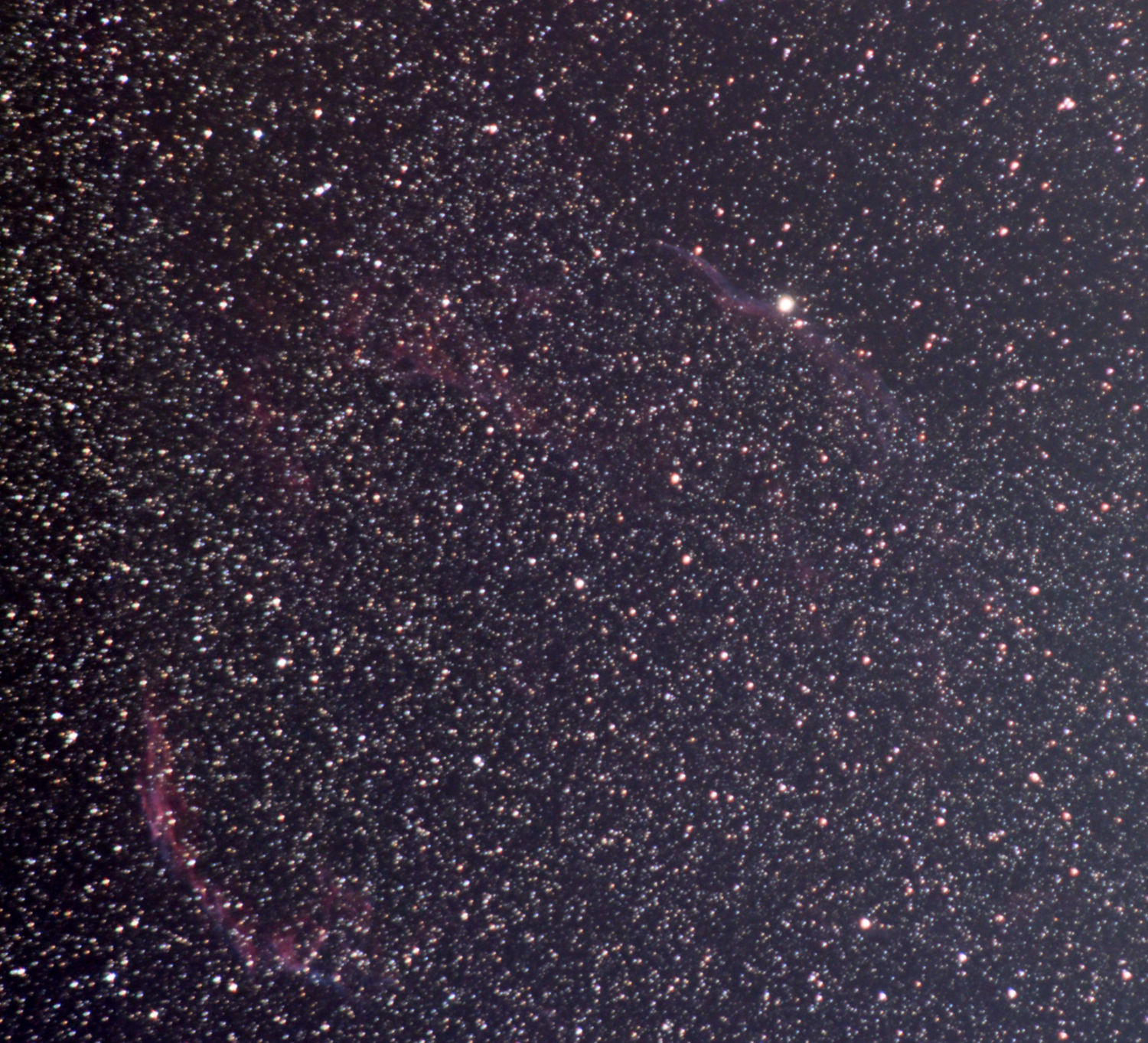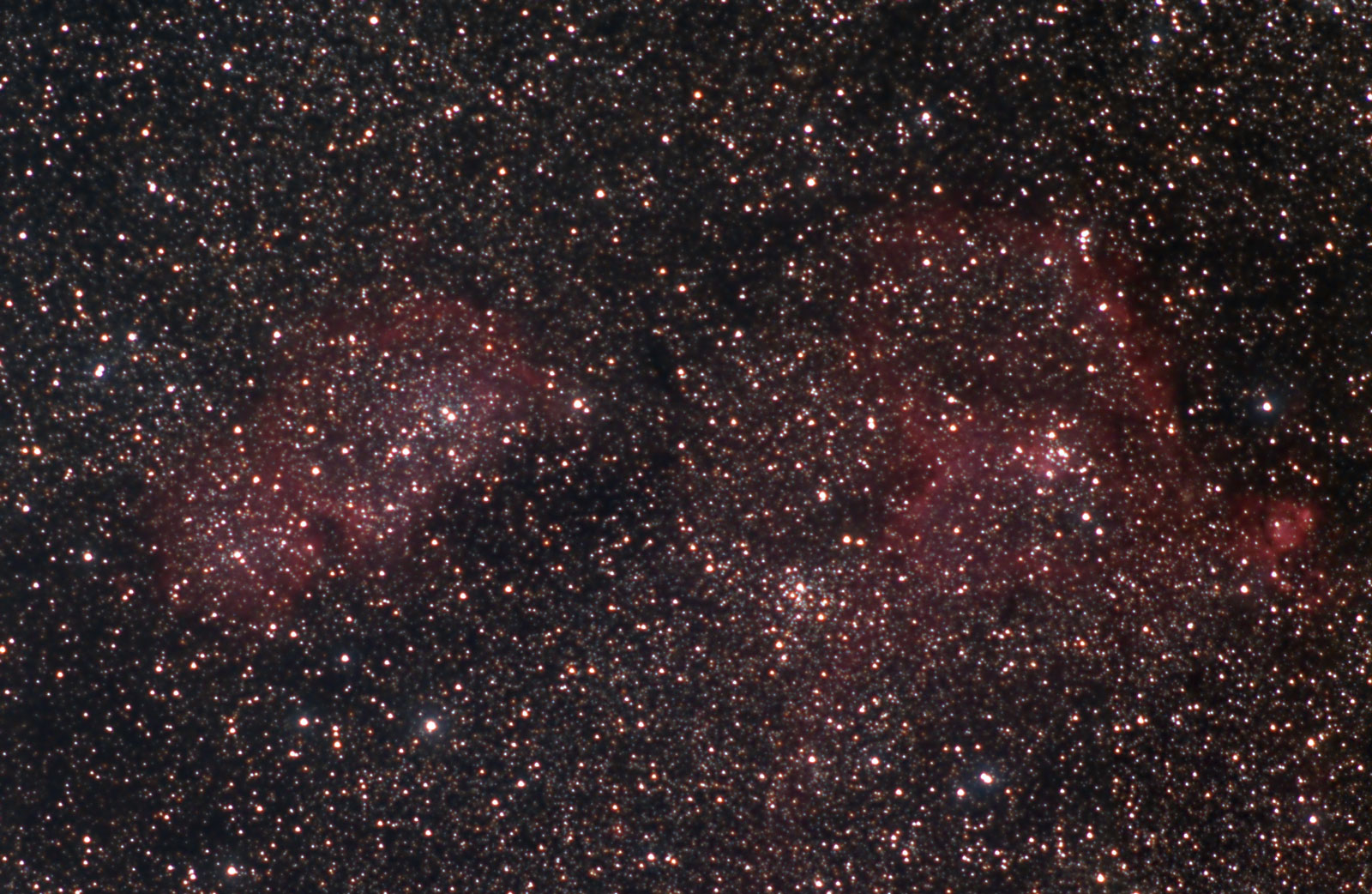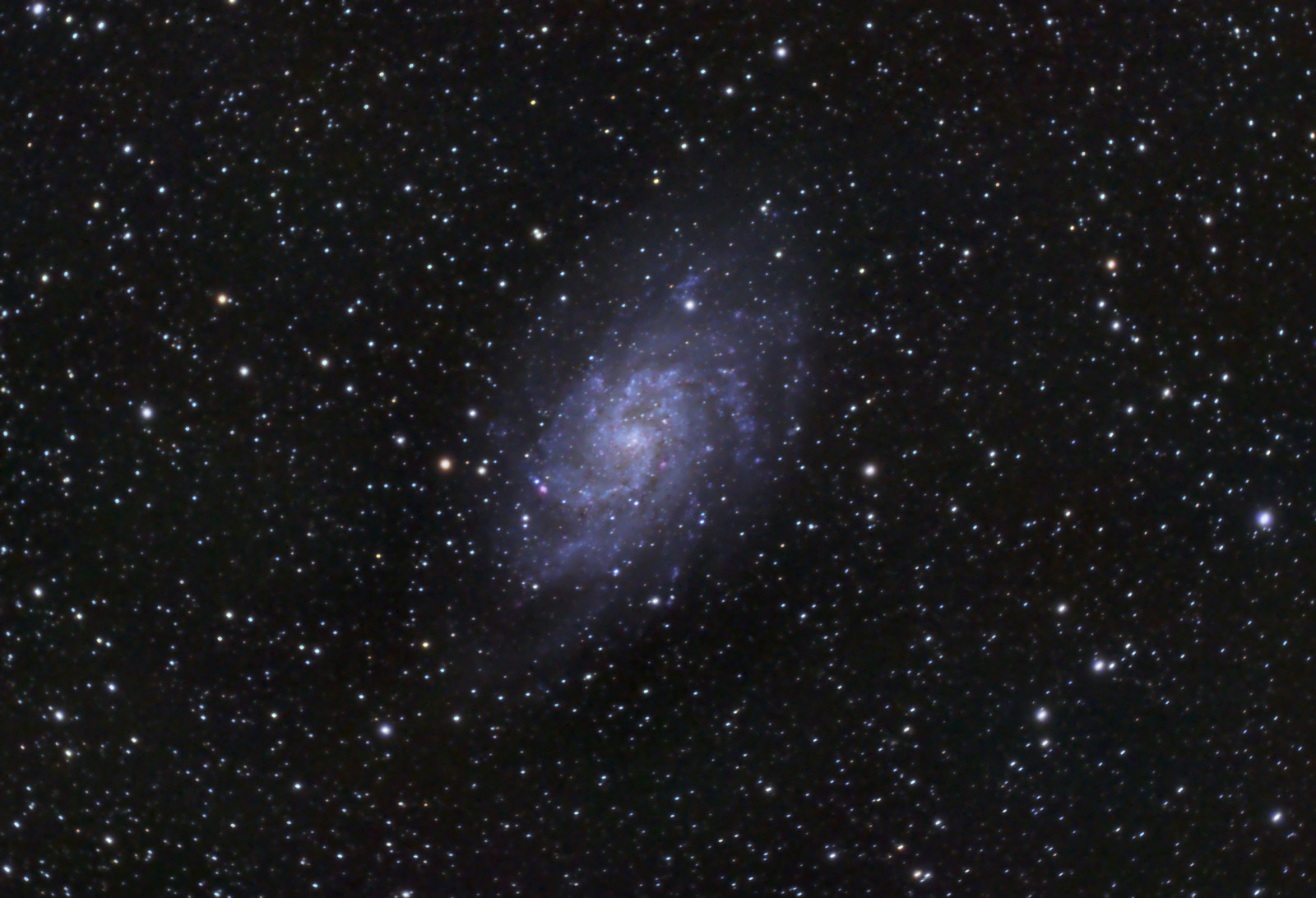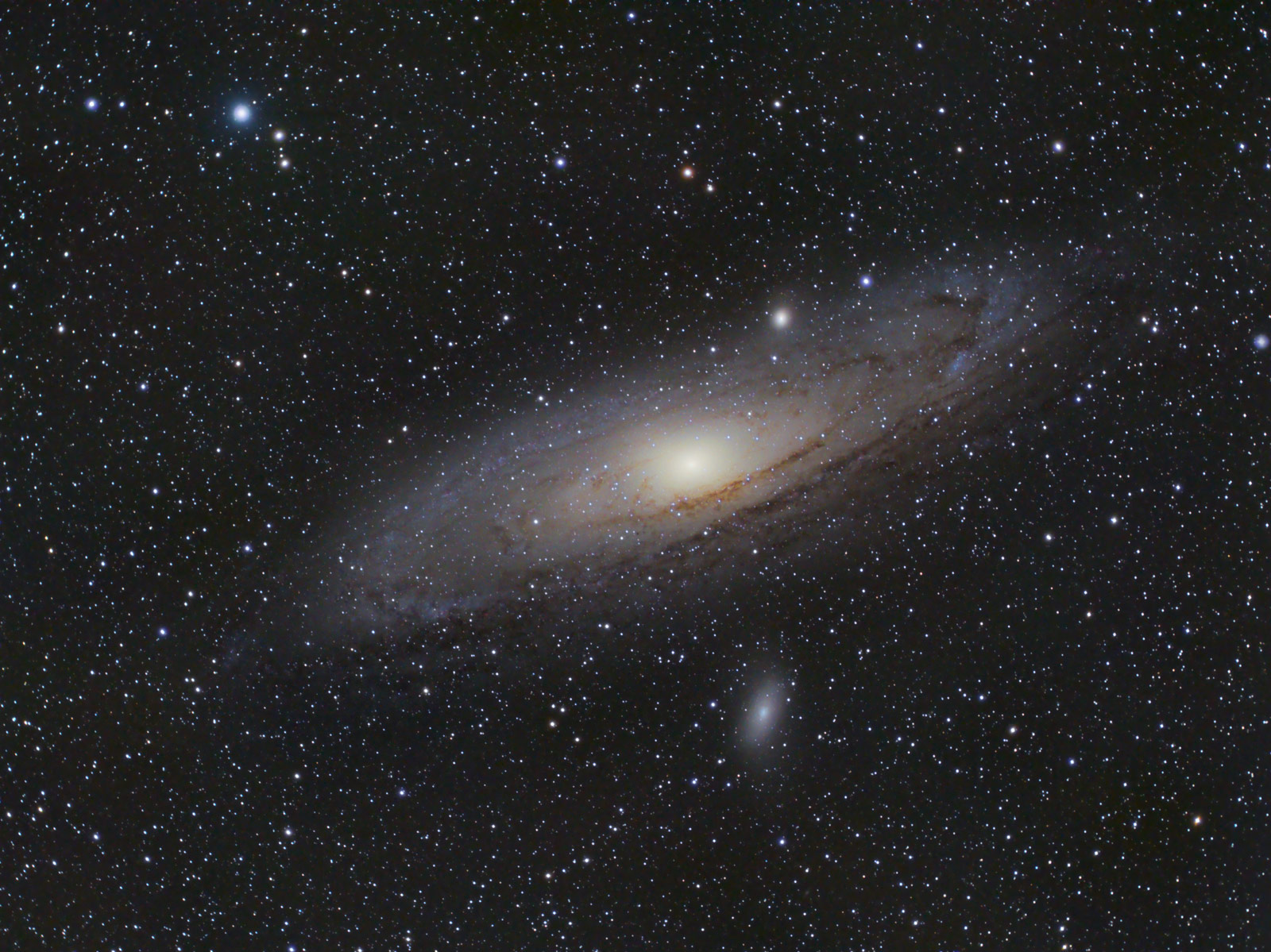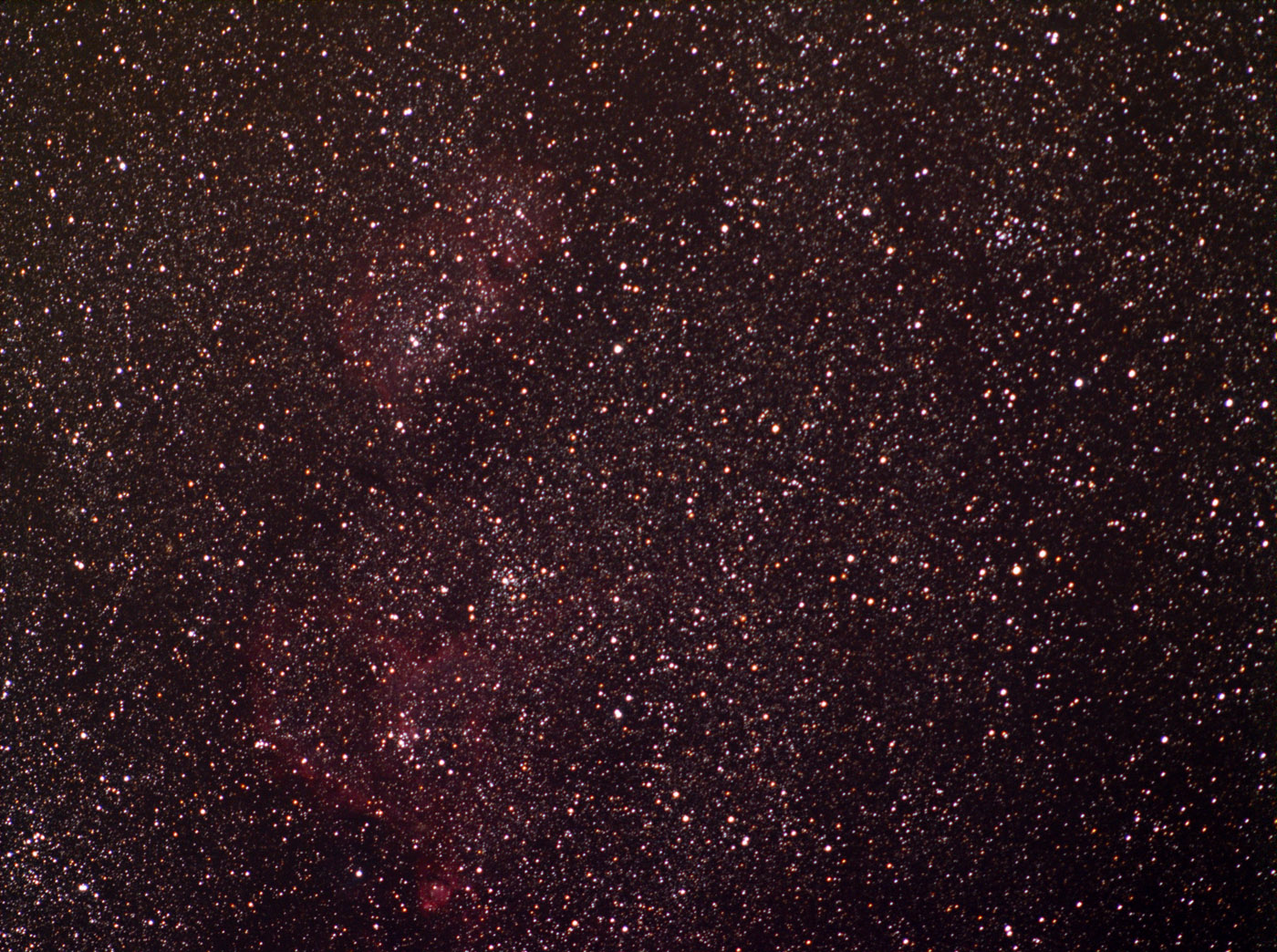My recent widefield nebula pictures of The Heart & Soul, Veil & Mu Cepheus left me rather flat with a disappointing lack of saturation and definition in the Ha regions. Suspicion fell upon the IR block filter in the imaging train but my first attempt at a replacement failed when it was a little too thick to enable my 75-300mm lens to focus.
Suspicion was confirmed when I found the original datasheet for the filter set where it was described as ‘Einsteiger filtersatz’ or Beginners filterset. The spectral response diagram showed a decline in light transmission after about 600nm. As the Ha line is at 656.28nm the filter was removing most of this light.
The second replacement was a Baader IR/UV cut filter in a 1.25″ housing that fits within the Geoptik adapter. As well as passing 98% of light upto 680nm this filter has the additional advantage of cutting violet light below 400nm.
A near full moon restricted me to relatively bright targets on the other side of the sky and the Veil nebula met the requirements. Focal length was increased to 200mm and 12 five minute sub-frames were acquired. Despite the less than ideal conditions the result is a huge improvement on my earlier attempt here: http://andrewluck.me.uk/?p=673
